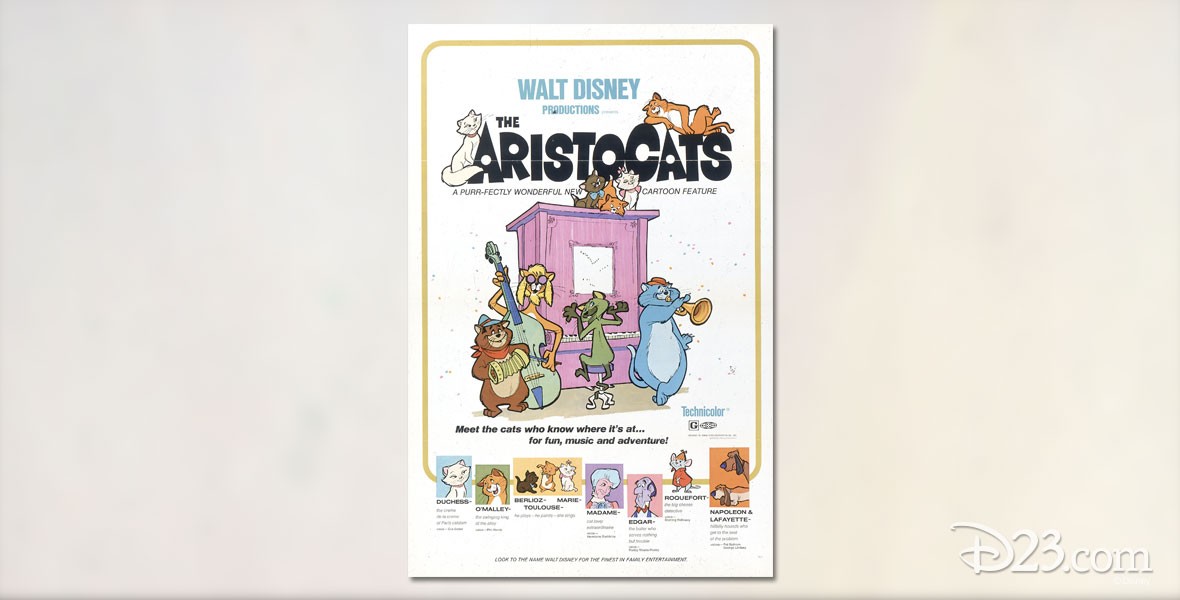Aristocats, The (film) Animated feature in which a pedigreed mother cat, Duchess, and her three kittens, Toulouse, Berlioz, and Marie, are catnapped by a greedy butler named Edgar who hopes to gain by getting the inheritance left to the family of cats by their owner, Madame Bonfamille. Things look hopeless for the cats until they are befriended by Thomas O’Malley, an easygoing alley cat. After the cats have many misadventures getting back to Paris, the villainous butler is frustrated when a gang of alley cats and a mouse named Roquefort join O’Malley to rescue Duchess and her kittens. Premiere in Los Angeles on December 11, l970; general release on December 24, 1970. Directed by Wolfgang Reitherman. 78 min. Features the voices of Phil Harris (Thomas O’Malley), Eva Gabor (Duchess), Sterling Holloway (Roquefort), Scatman Crothers (Scat Cat), Paul Winchell (Chinese Cat), Lord Tim Hudson (English Cat), Vito Scotti (Italian Cat), Thurl Ravenscroft (Russian Cat), Dean Clark (Berlioz), Liz English (Marie), Gary Dubin (Toulouse), Nancy Kulp (Frou-Frou), Charles Lane (Georges Hautecourt), Hermione Baddeley (Madame Adelaide Bonfamille), Roddy Maude-Roxby (Edgar), Bill Thompson (Uncle Waldo), George Lindsey (Lafayette), Pat Buttram (Napoleon), Monica Evans (Abigail Gabble), Carole Shelley (Amelia Gabble), Pete Renoudet (French Milkman), and Maurice Chevalier, who sang the title tune. This was the first feature-length animated cartoon completed without Walt Disney. The song “Ev’rybody Wants To Be A Cat,” was written by Floyd Huddleston and Al Rinker. “Thomas O’Malley” was written by Terry Gilkyson, and Richard and Robert Sherman composed “The Aristocats,” “She Never Felt Alone,” and “Scales and Arpeggios.” For the background musical score, George Bruns featured the accordionlike musette for French flavor and with his considerable background with jazz bands in the 1940s, provided a great deal of jazz music. The film was four years in the making, budgeted at over $4 million, and included more than 325,000 drawings made by 35 animators, with twenty main sequences to the film having 1,125 separate scenes using 900 painted backgrounds. The project employed some 250 people. The film was a box office success, earning reissues in 1980 and 1987. Released on video in 1996.


